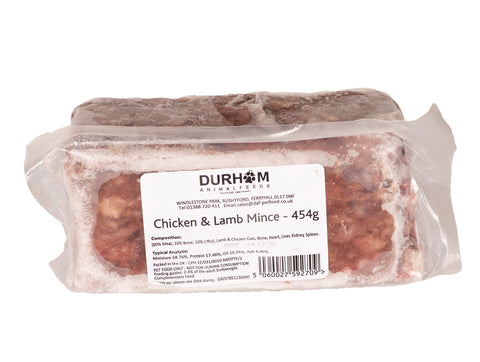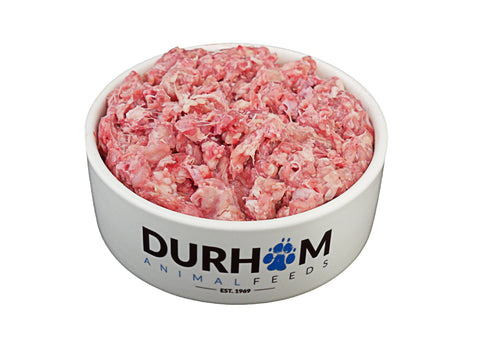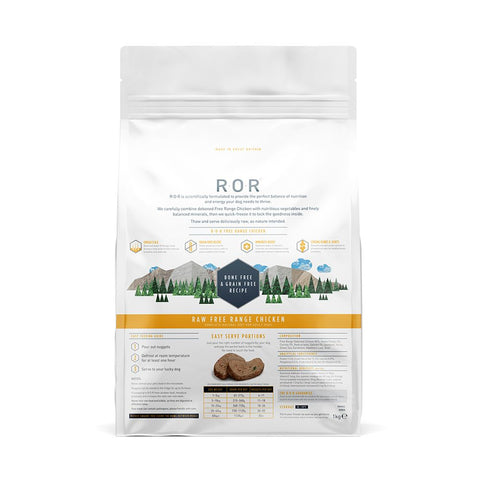What’s Really in Your Dog’s Food?


What is in your dog’s food?
So your dog food looks good, it’s advertised as healthy and balanced but what do the ingredients actually mean?
Here are a few common ingredients and what they actually are.Meat & Animal derivatives – Meat and animal by-products are the cheapest protein source for manufacturers; these products are not chosen for their quality.
Dogs with intolerances to certain proteins may be ok with one batch but not another as its impossible to know what’s in each bag.
As a generic term for animal protein it can be sourced from any animal, so your guess is as good as mine! Rat? Giraffe? Horse? Rabbit? Emu? Road Kill? Pound animals (cats & dogs)? Who knows…
Animal by-products can also be sourced from any dead animal as long as they are rendered to UK law, this means they can still contain the drugs used to put them down or the drugs used to treat them (including cats & Dogs). Cereals – Another vague term, this does not define exactly what is in the food, it could be wheat, barley, oats, maize or other cereals. Some cereals can be healthier than others & some cause intolerances and allergies, so knowing what ones are being used can be very important.
Cereals can be sweepings off the factory floor, peanut shells, stems, leaves & roots. Cereals are not chosen for their quality, nutritional value or digestibility; they bulk out the product & increase the manufacturer’s profit.
It is better to avoid ‘cereals’ in dog food opt for rice as rice has many benefits for dogs & is digestible.
Maize – (corn) frequently used however it can be difficult to digest , used as a source of carbohydrates. It’s a cheap filler. If you feed whole sweetcorn to a dog it will come out the other end as whole sweetcorn. Any food that contains maize will create a lot of faeces, usually hard with soft at the end; this also indicates too much food has been given.
Wheat – (wheat gluten) used as a carbohydrate source in dog food but is associated with causing allergies in many dogs.Egg – Egg is the most digestible protein as well as providing vitamins and minerals.
Oats – Very versatile ingredient used as a fibre source, also provides a good source of energy.
Beat Pulp – A good source of insoluble and soluble fibres it is a prebiotic.
Beef – Although a good source of protein, beef is a huge cause of intolerances, it is lower down the digestibility scale from chicken, turkey & lamb.
Extract of Yucca Schidigera – Used in dog food to reduce the smell of the dog’s faeces caused by the poor quality of the food. It also has anti-inflammatory & antioxidant properties. It can help with digestion, contains vitamin C & Iron.
The generic terms such as ‘meat and animal derivatives’, cereals, derivatives of vegetable origin and EC permitted additives are used to hide the real ingredients from the customer.
Fresh Chicken or Dried Chicken?1 – Fresh chicken (min 35%)
2 – Dried chicken (min 26%)
It would appear that no.1 was more superior because it’s nearly 9% more chicken than no.2 but is it? These are % before processing; fresh chicken is approx. 70% water whereas dried chicken is approx. 10%. So there is vastly more chicken in the finished product using dried chicken. This allows the meat content to be displayed as the number one ingredient even though the bag you buy isn’t. There is nothing wrong with using fresh meat but manufacturers should state the amount after the water content is removed. Nifty trick by the manufacturers eh?
What is Digest?
Digest is used as a natural Flavour enhancer. The better quality digests will be made of natural ingredients such as liver and will be naturally preserved. You should look for named digest such as lamb digest, turkey digest, chicken digest etc. avoid ‘animal digest’ or ‘digest’ as these can be any form of animal and is an indicator of poor quality (it is the digestive system including the contents). Remember that digest in dog food is not a bad thing as long as it’s good quality and a fixed protein source.
Artificial Additives
Artificial colours – does your dog care about what colour his food is? These are designed to attract the owner, not for the dog’s benefit. Artificial colours are E numbers.
Artificial flavour
An ingredient that should not be needed in dog food, what disgusting flavours are they trying to hide? Artificial flavours & colourings have been linked to hyperactivity. A high-quality food will taste good naturally.
Artificial preservatives and antioxidants
Required to give the pet food the shelf life we require. As soon as fats come into contact with the air they begin to oxidise and become rancid. These can be listed as EC permitted antioxidants.
EC permitted antioxidants
This covers a large range of chemicals most commonly used are E320, E321 & E324. They are extremely effective at their jobs but are associated with several health problems. Not all E numbers are bad, some are vitamins and it’s the artificial E numbers that cause health problems and Hyperactivity.
There are healthier and more natural choices available. The healthier option to preserve the food is Tocopherols which are a blend of vitamins E & C; these are commonly made from vegetable oils. This is quite often used I conjunction with rosemary which is a natural antioxidant.








